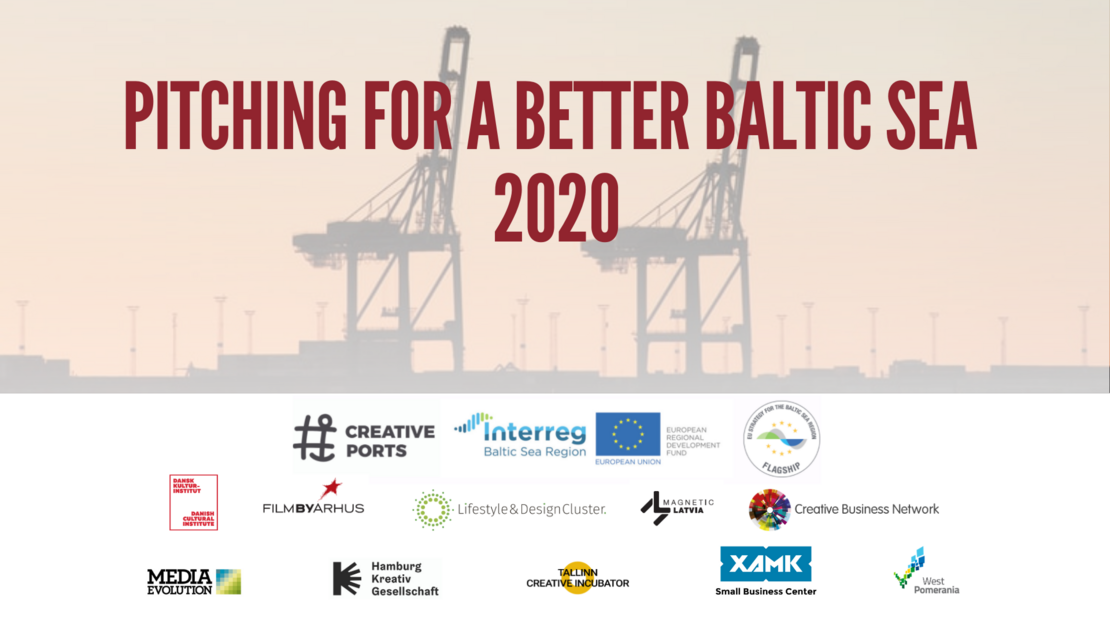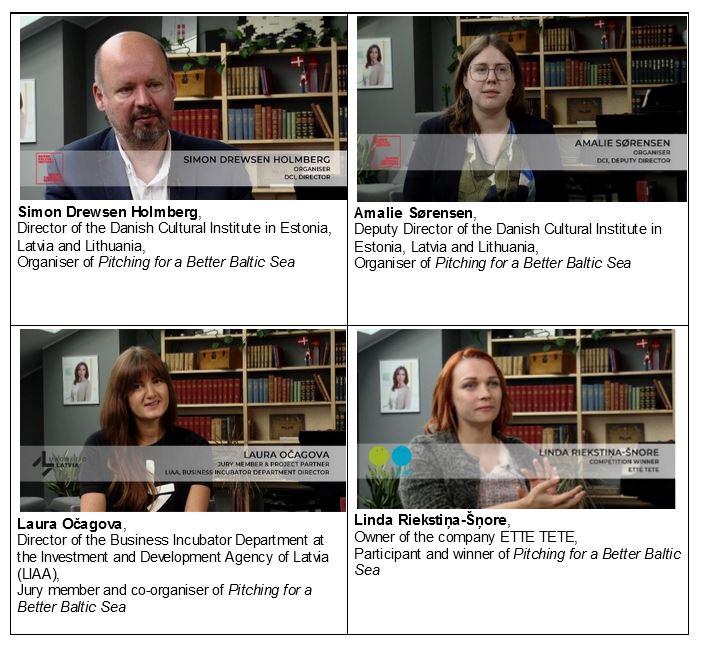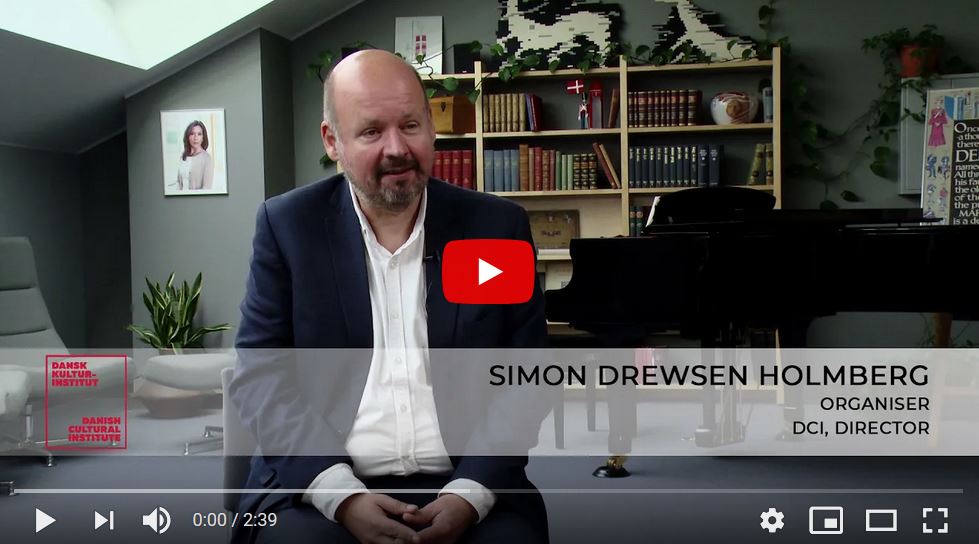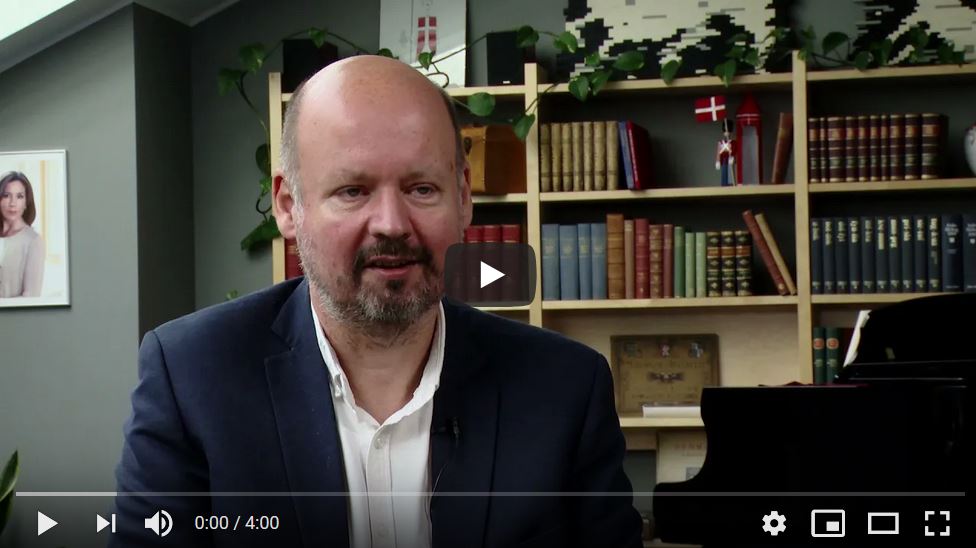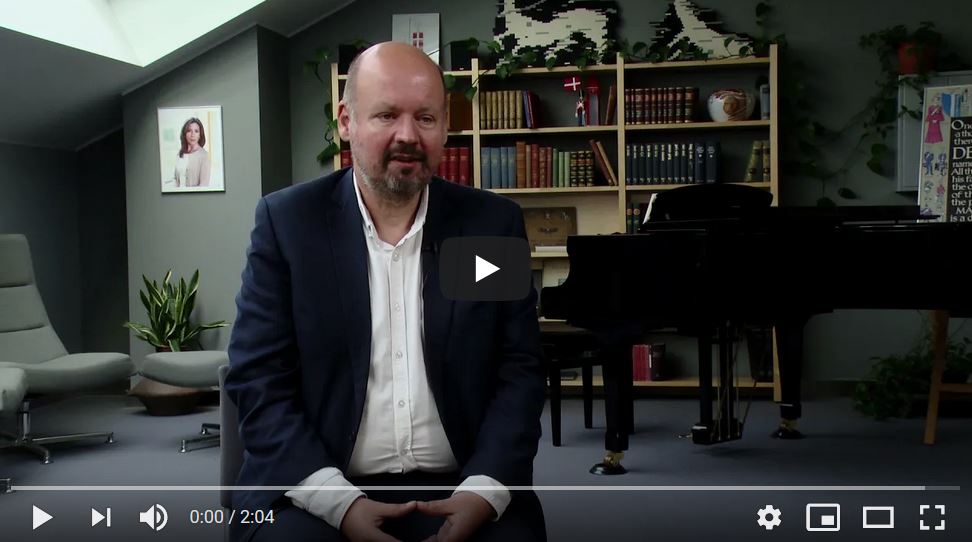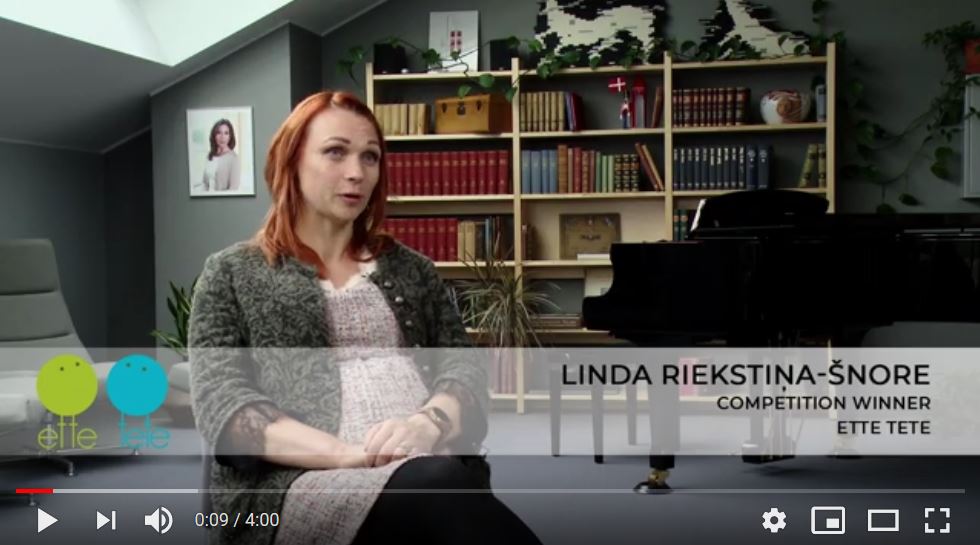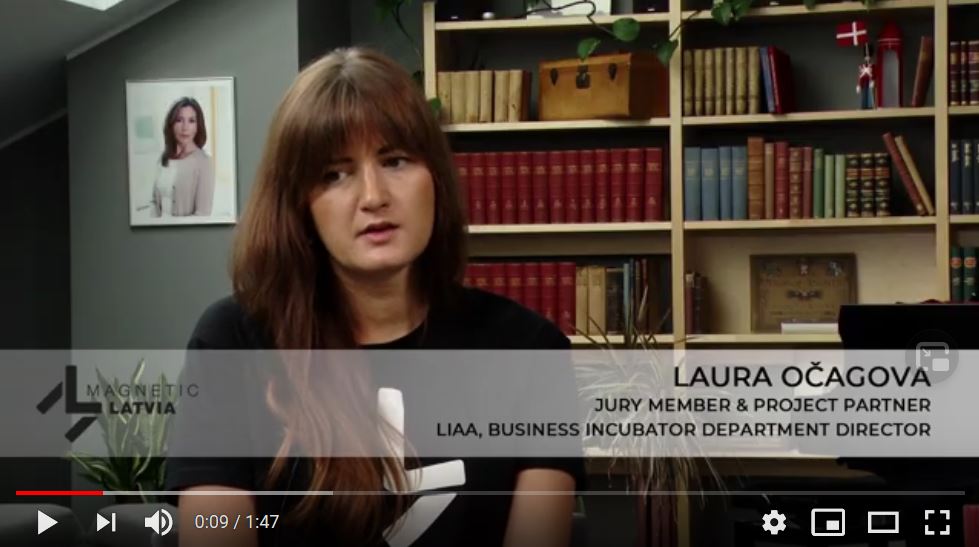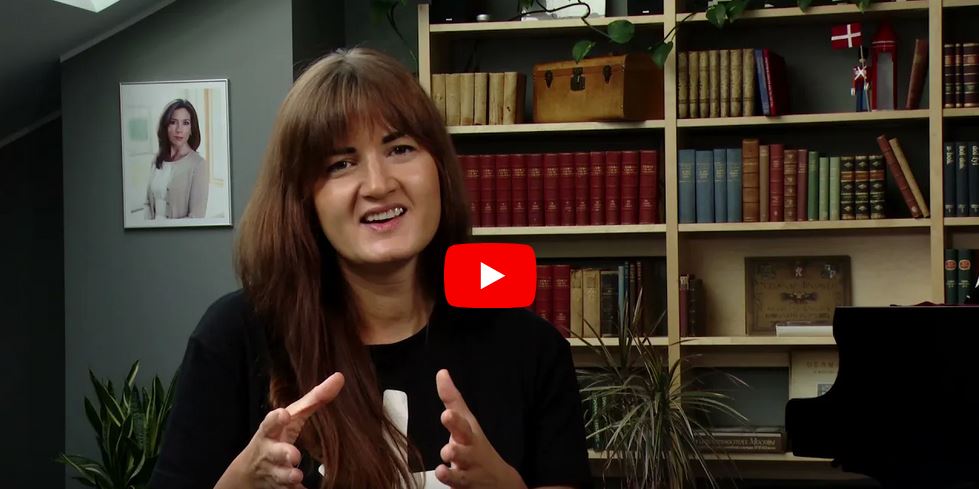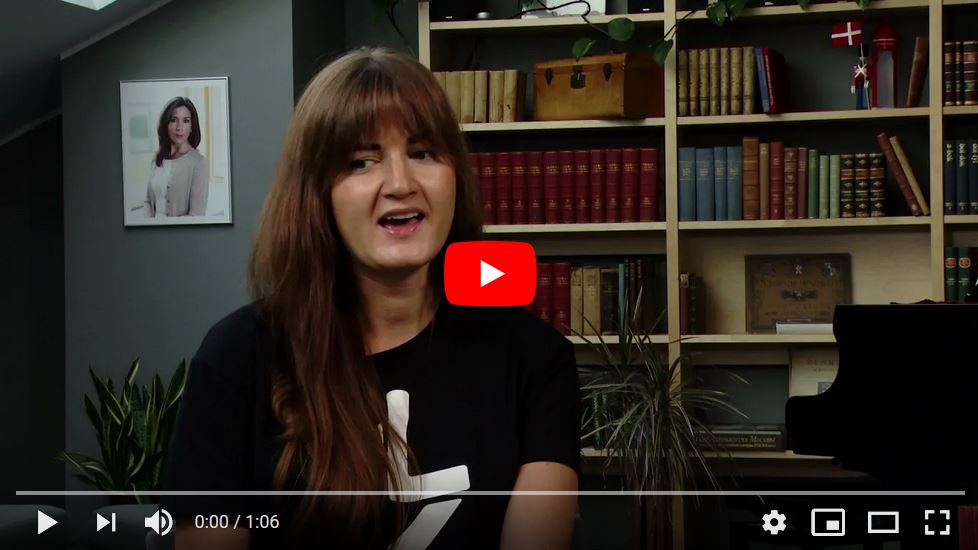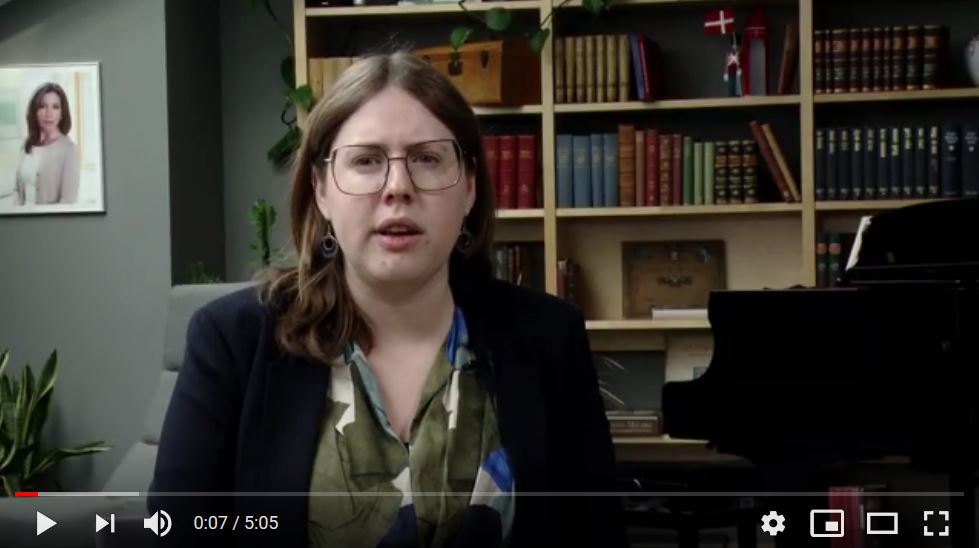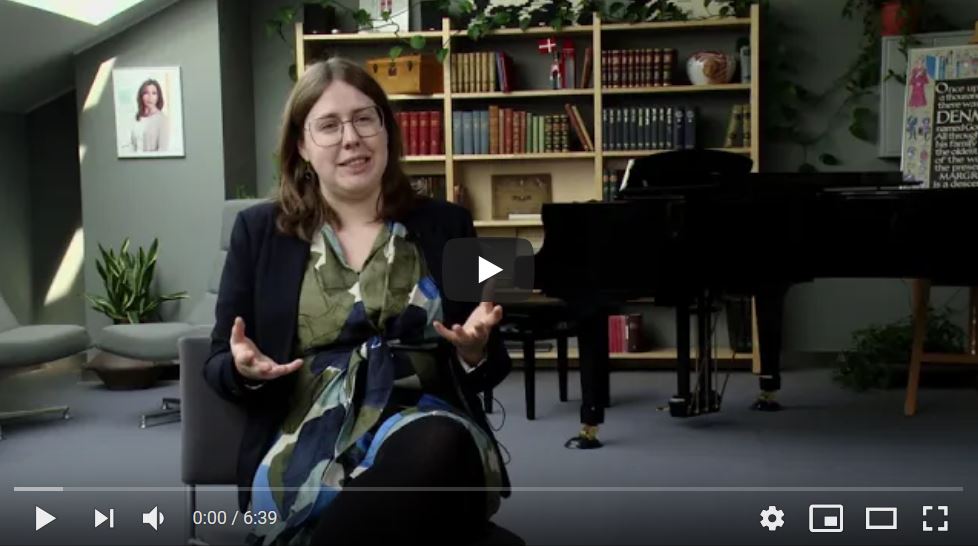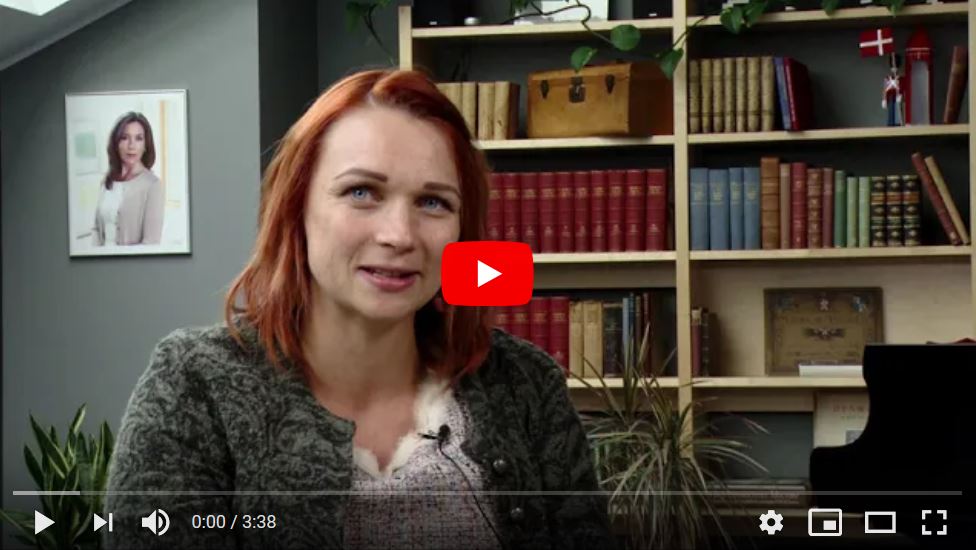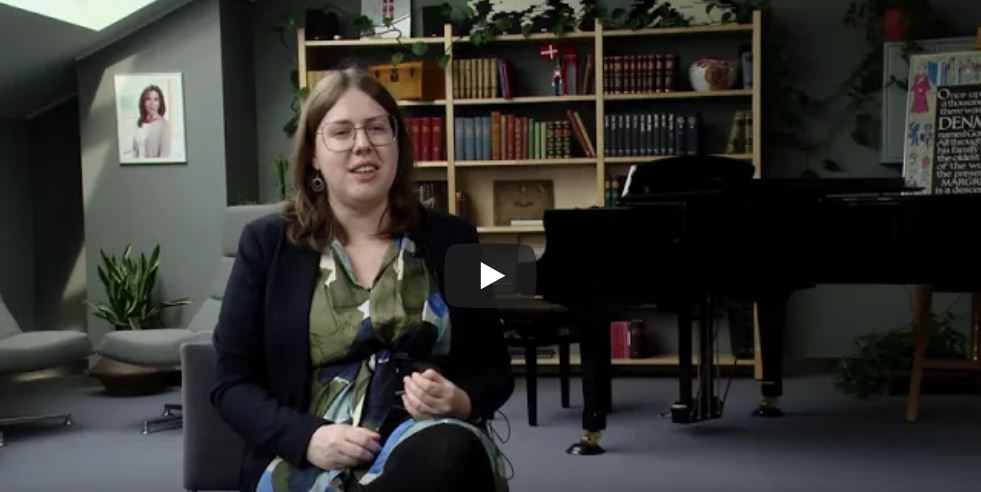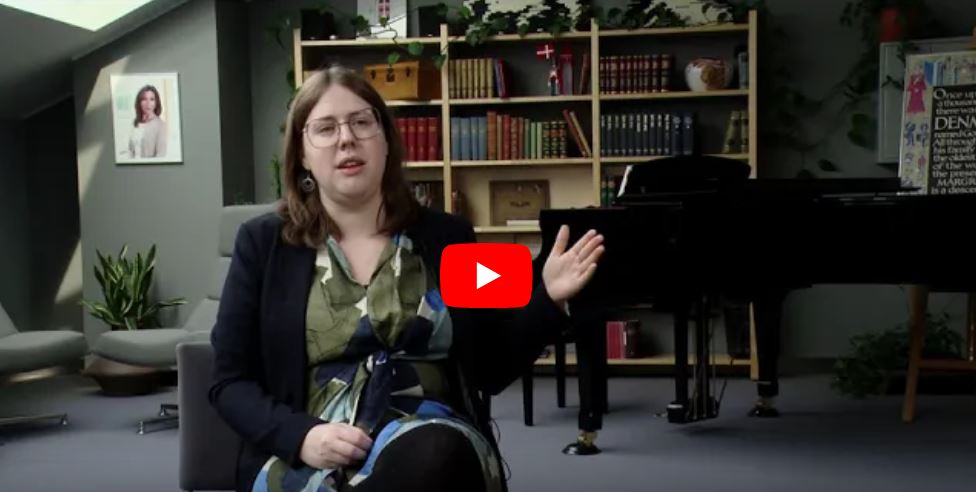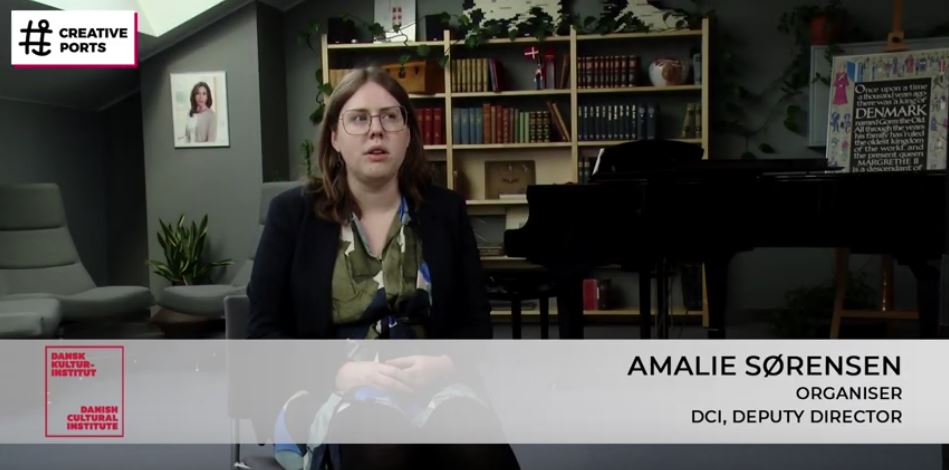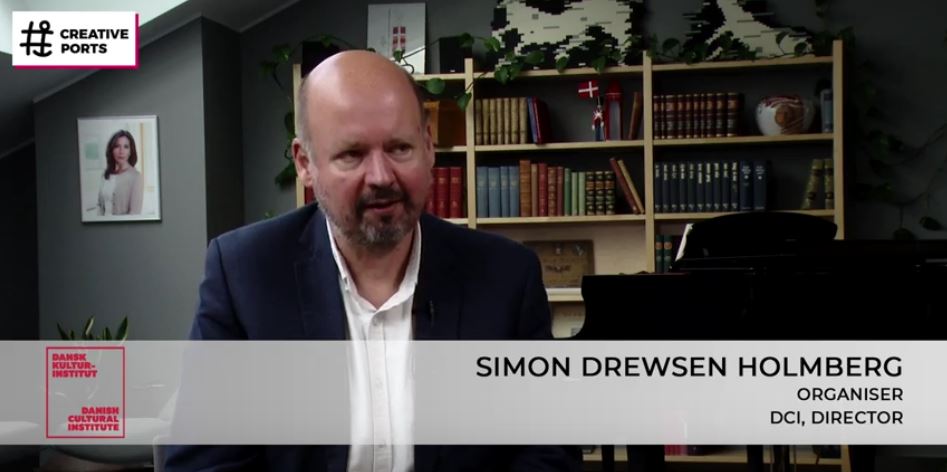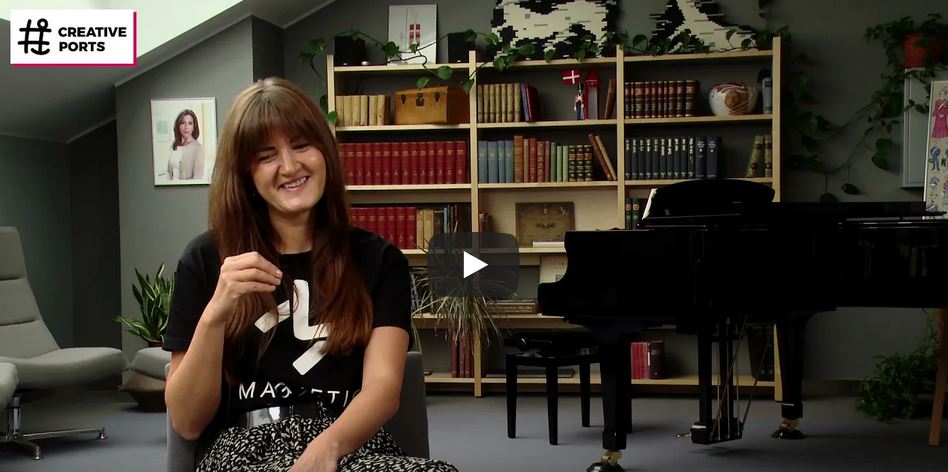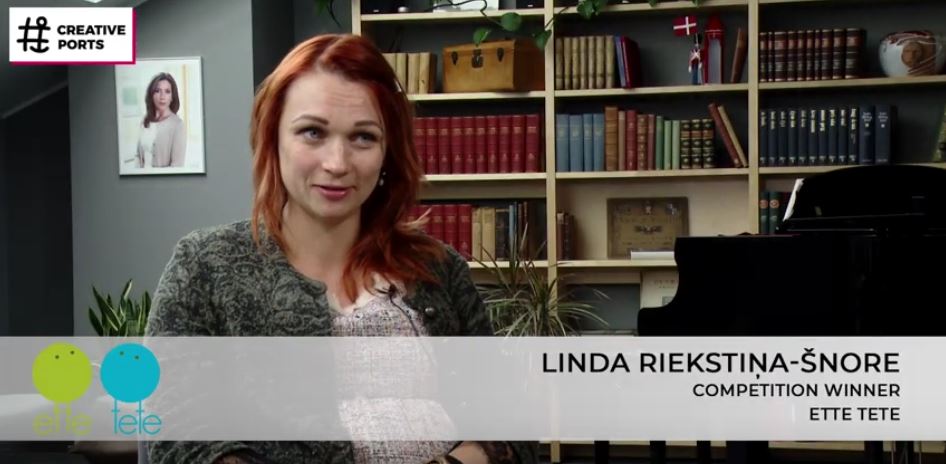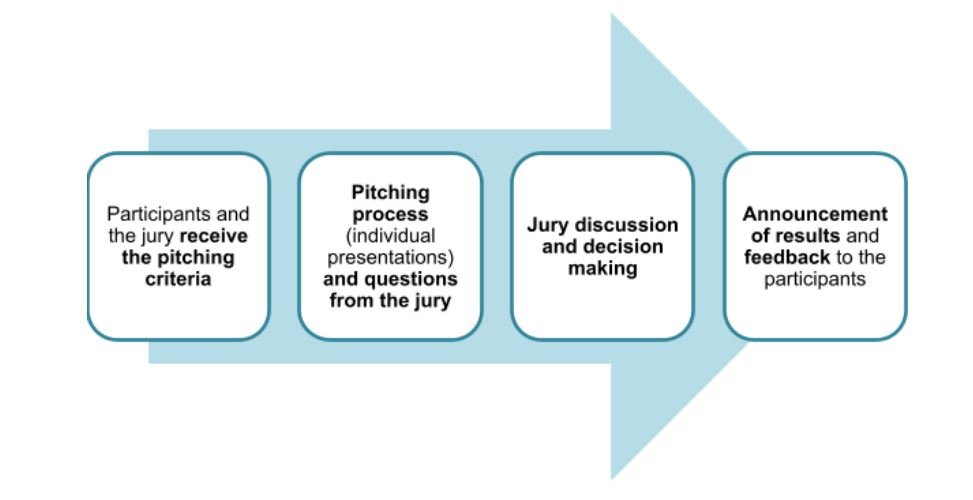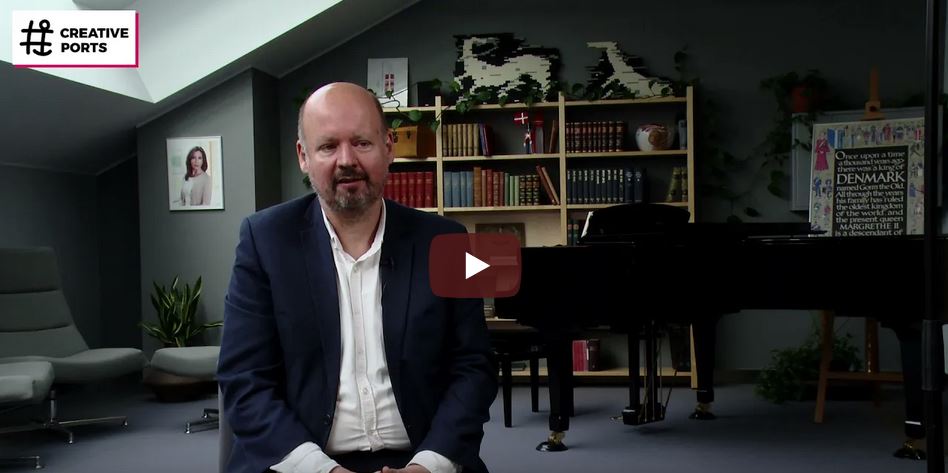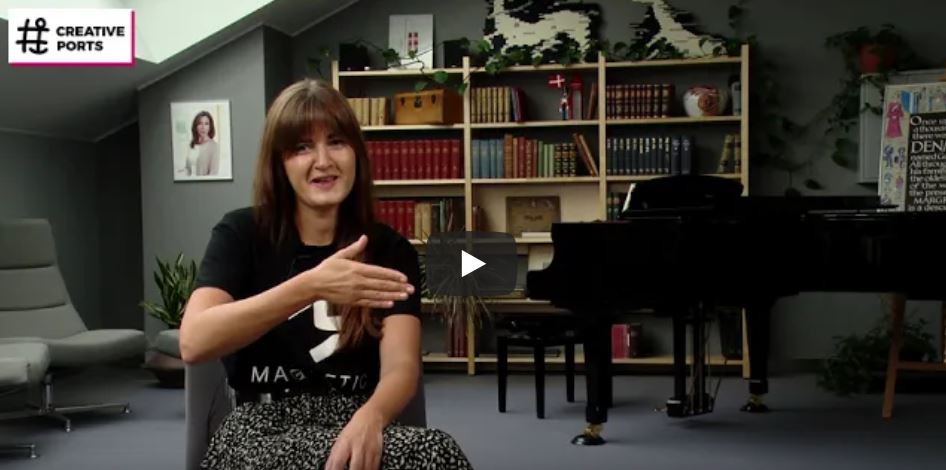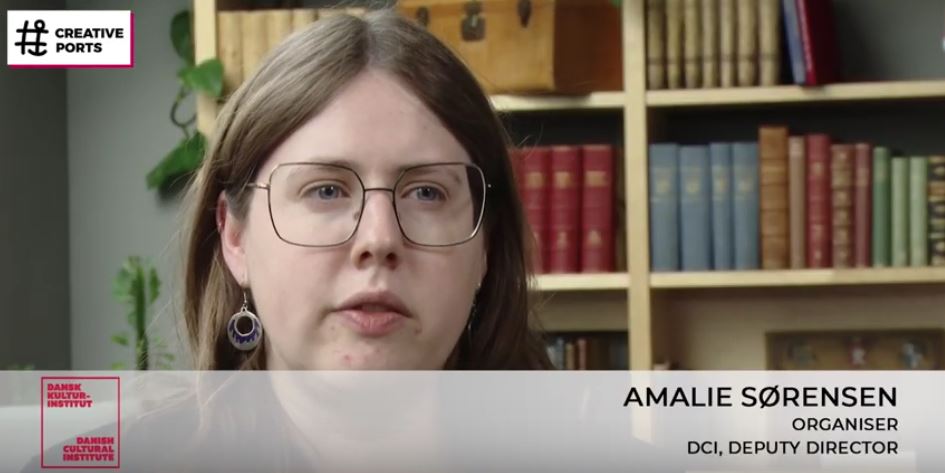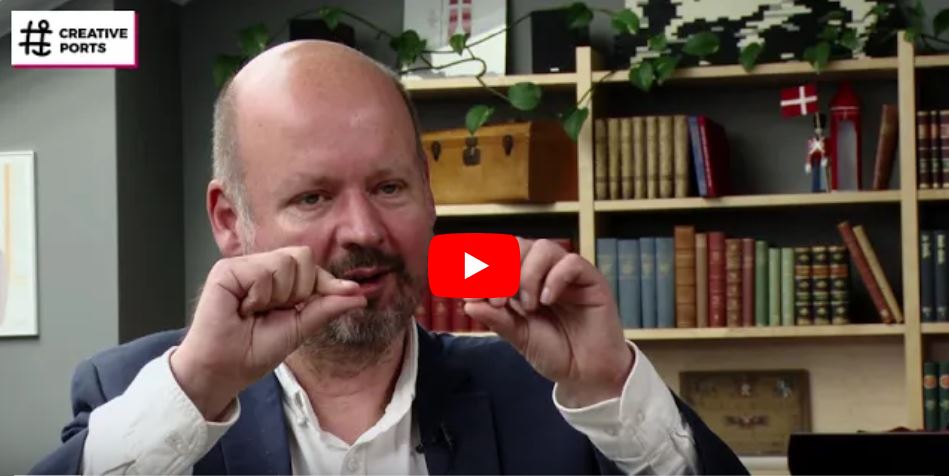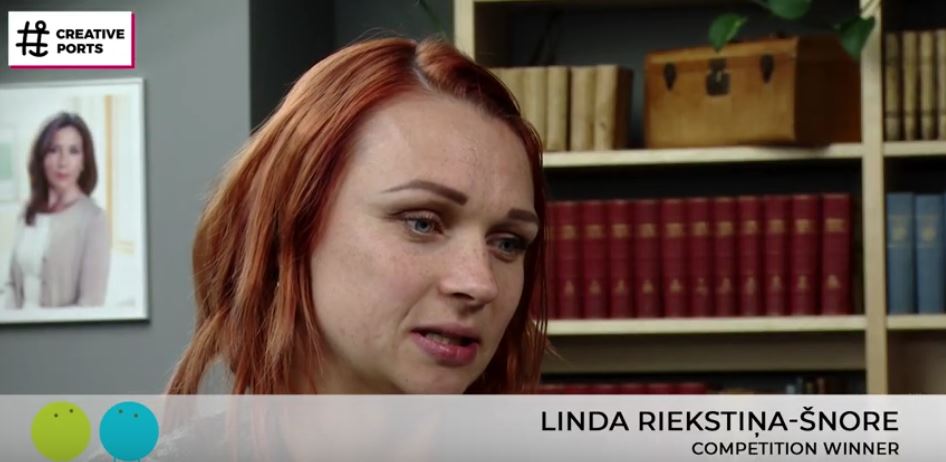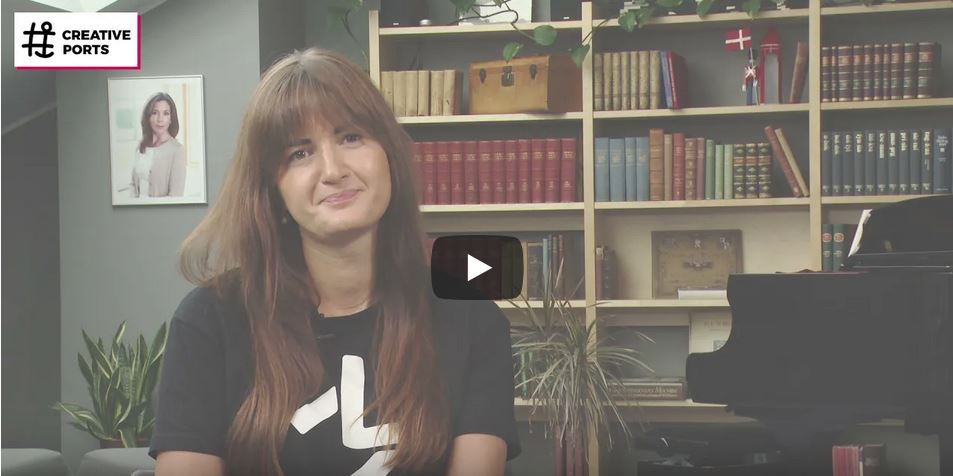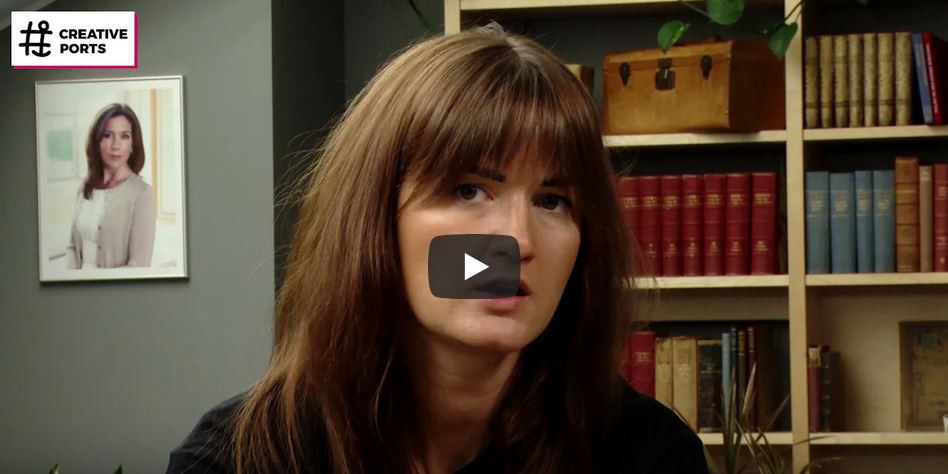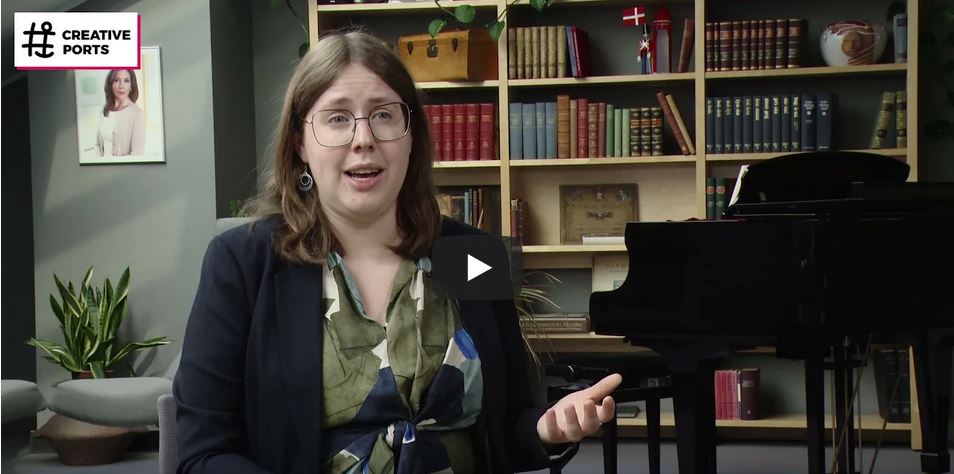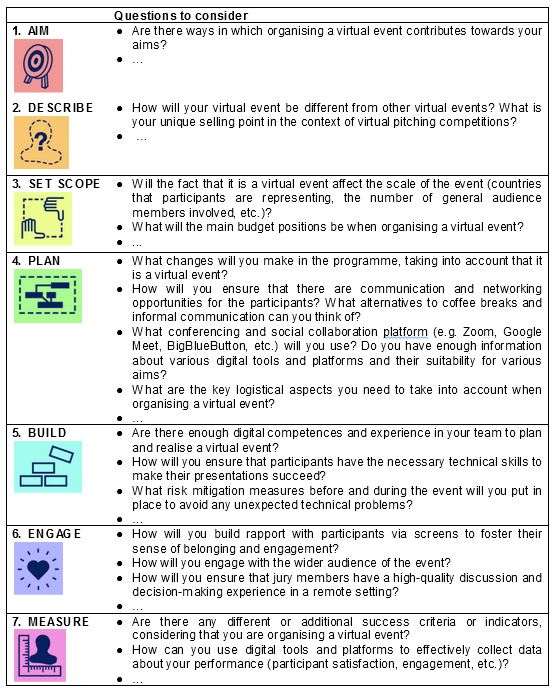INTERNATIONAL PITCHING COMPETITION
How to organise a successful networking event and pitching competition for the Cultural and Creative Industries
The Learning Module has a thematic focus on pitching competitions and networking within CCI and is based on the project partners’ experience in organising the international pitching competition, Pitching for a Better Baltic Sea in Aarhus, Denmark in October 2019. Entrepreneurs and start-ups from both Denmark and Latvia participated in the event. In addition, insights from the following year’s event, Pitching for a Better Baltic Sea 2020, have been added to highlight the specifics related to the organisation of a virtual event, considering the restrictions and limitations brought about by the COVID-19 pandemic.
Hosting Partner:Danish Cultural Institute
Before you start your learning, you are invited to think about your individual learning objectives. To structure your thinking about your learning, you are invited to use and design a KWL chart that allows you to:
- identify what you already KNOW about organising an international pitching competition,
- consider what you WANT to know about organising an international pitching competition,
- at the end of your learning, record what you have LEARNED about organising an international pitching competition.
Please take a moment to create your own notes, following the structure of the KWL chart below. All the themes of the Learning Module are organised in four bigger sections – (1) Setting aims and the scope of the event, (2) Planning and building an event, (3) Engaging with audiences, and (4) Measuring your achievements.
As this is a pre-course evaluation and you haven’t engaged with the learning material yet, please feel free to make any conclusions and comments. The aim of this exercise is to facilitate a self-assessment of your current knowledge and/or experience gaps, as well as guide your learning during and after the Learning Module.
- Case study method – learning is based on the exploration of a “real-world example”, i.e. the case study of Pitching for a Better Baltic Sea. Instead of theory, the learning centres around the applied knowledge and experience by the organisers of Pitching for a Better Baltic Sea;
- Self-directed learning process – you are invited to set your own individual learning objectives and the learning pace and time frame that you are comfortable with. At the same time, to guide your exploration of the case study Pitching for a Better Baltic Sea, specific learning tasks are set at the beginning of each of the sections or subsections. The Learning Module can also be studied collectively – you can invite a colleague or a friend to explore the material together with you or you can study the module in a group. When studying the material in a group, it is important to provide extra time for group interaction and discussions;
- Learning through reflection – considering that this is a self-directed Learning Module, your learning is reliant on reflection that involves active processing, reviewing, synthesising and evaluation of the information provided as part of the learning content and materials. Thus, you as a learner are engaged in and responsible for the process of meaning-making and knowledge transfer to the contexts that are relevant for you. To guide and facilitate your reflection, learning tasks on all various topics are provided as part of the Learning Module. To benefit most from the analysis and reflections on the case study, you are encouraged to make enough time for thinking and notetaking. This will allow you to arrive at conclusions that are useful for your further work.
By the end of this module, you will be able to:
- identify and understand the key stages of organising an international networking event and pitching competition for CCI,
- understand and analyse the specific components of each of the stages,
- evaluate and learn from the challenges and successes related to the implementation of the case study Pitching for a Better Baltic Sea,
- apply the gained knowledge to develop your own idea for a networking event and pitching competition for CCI.
The module is organised in 7 core sections, following a 7-step model developed within the “Creative Ports” project that describes key stages of organising and implementing an internationalisation project for CCI.

Each of the sections, describing the 7-step model, consists of:
- input in the form of learning materials – short videos by project organisers and participants as well as additional project materials,
- learning tasks to maximise your learning,
- key learning points that summarise main ideas,
- ideas for further reading (only for some sections)
NB! In addition to the 7 core sections, an 8th section, “Going Virtual”, has been added. The section has been developed based on the experience from planning and organising a virtual Pitching for a Better Baltic Sea in 2020. This section has been created as an addition to the initially developed Learning Module in order to provide learners with key insights on virtual events which most likely will be more and more common in the post-Covid-19 world.
Learning in this module is based on studying a particular case study – the planning and implementation of the international networking event and pitching competition Pitching for a Better Baltic Sea. Key learning materials of the module are short video interviews with project organisers and participants where they introduce the process of organising such an event, explain the thinking behind their decisions, share significant aspects and various challenges related to their work and experience in this and similar projects, outline success stories and reflect on possible improvements for the future.
The project participants that share their knowledge and experience were selected based on three different perspectives – as an organiser, jury member and event participant – that are vital for acquiring an in-depth understanding of the organisation and implementation of an international pitching competition.
LEARNING MATERIALS
In this section, we will look at the very first steps of the process of developing an international networking and pitching event for CCI. We will learn about what is important when setting the aims of the event and how to arrive at a great event idea.
1.1. Setting Aims
The first thing to do when considering organising an event is to define its aims – what are you planning to achieve and why is it important.
Learning Tasks:
DISCOVER | Please watch the two videos of DCI Director Simon Drewsen Holmberg where he explains the context and aims of the event Pitching for a Better Baltic Sea. |
THINK & NOTE | While watching the videos, please note what different aims the organisers have set for the event. Please also pay attention to the benefits and specifics Simon is pointing to when working with a project with a societal agenda. |
COMPARE & CONCLUDE | Afterwards, please see Key Learning Points and compare them with your notes. |
An event can have several complementary aims.
In the case of the event Pitching for a Better Baltic Sea, the organisers have set two interrelated aims, seeing these aims as complementary to each other: 1) the development of the business capacity and skills of CCI companies, especially within internationalisation, and 2) awareness-raising about sustainable development issues and solutions. More concretely, Pitching for a Better Baltic Sea focused on how the United Nations’ Sustainable Development Goals (SDGs) can be actively used to create value and give direction to CCI companies. Thus, the aims of a similar event for CCI can be related to the development of particular skills, networking opportunities, the development of new perspectives and attitudes, awareness-raising, etc.
Having a social agenda for an event is an enriching experience for all.
In the video, Simon points to the benefits of having a focus on sustainability issues. Apart from the evident benefits for society and the planet, a pitching competition that centres on sustainability can provide the framework for CCI companies to think through their operations and prepare for the growing demand for products and services that are environmentally friendly and promote sustainability values.
The aims of an event contribute to a wider, overarching purpose.
The aims of a particular event usually contribute to a long-term change the organisers want to see. With regard to Pitching for a Better Baltic Sea, organisers are working towards better internationalisation of the CCI sector as well as to inspire CCI companies to develop through working towards making the world a better place, i.e. through integrating the sustainable development dimension in the way they operate and the products and/or services they provide.
1.2. Finding Your Own Idea
The process of setting aims for your event goes hand in hand with looking for a great and unique idea that corresponds to the needs of your target audience.
Learning Tasks:
DISCOVER | Please watch the video of DCI Director Simon Drewsen Holmberg on what makes a great event idea. |
THINK & PLAN | Having heard the various aspects Simon emphasises, please think about your own ideas for a similar event – how clear and well-defined are they? Also, spend a moment planning your next steps – what do you need to do next to further develop your event idea and how and when will you do that? Please also see the Key Learning Points to stimulate your thinking. |
Having a unique selling point
In the video, Simon mentions a “unique selling point” – a factor that differentiates your event idea from other similar events organised by other organisations. To be successful with your event, you should check if and how it is different from what is already available – is there uniqueness in terms of your event’s geographical location, subject area, target audience or similar?
Further Learning
Familiarise yourself with the idea of a “unique selling point”, also known as a “unique selling proposition”. Search on the internet for a unique selling proposition canvas and use it to analyse the development of your event idea. There are many templates and approaches available; here is just one example:
Engaging with your target audience
Apart from the analysis of similar events, it is critical to research and consult with your target audience when setting the aims and developing the idea for an event. As Simon notes, it is important that what you are offering is something that people are asking for, or that when you are telling them about it, they want to have it.
In this section, we will look at the key aspects of further concept development of an international networking and pitching event for CCI. Concept development includes defining the target audience of your event and further development and description of the concept of the event.
2.1. Understanding Your Audience
In order to design a successful concept for a networking event and pitching competition, it is important to understand the needs, expectations and motivation of your target audience and potential participants.
Learning Tasks:
DISCOVER |
|
EVALUATE & NOTE |
|
Key Learning Points and Self-Assessment Exercise
Based on the interviews with Linda and Laura, please see the table below which summarises their opinions on the key motivational factors for CCI to participate in a pitching competition.
Please evaluate with “Yes” or “No” whether as part of the event you have in mind, you have thought about each of the motivational factors. Further, please reflect on how you will ensure networking, promotion, etc. for your participants. Please give concrete examples. Also, if there are any additional motivational factors you can think of, please add them to the list.
Key motivational factors for CCI | Yes/No | How will you ensure it? | |
| 1. | Networking: with other CCI companies, investors and media | ||
| 2. | Promotion and PR: an opportunity to promote and spread the word about their business | ||
| 3. | Skills and character development: presentation and communication skills, pitching skills as well as confidence development | ||
| 4. | Assessment: based on the competition criteria, an opportunity to assess the strengths and areas for improvement of your business | ||
| 5. | Prize | ||
| 6. | ... |
2.2. Further Developing the Concept
When you have decided on the aims of your event, you need to further develop and describe the event concept by looking at both the thematic as well as the organisational aspects. The development of the concept of an event is reliant on your research on the target audience and the partnerships you have or are planning to establish.
The development of the concept of an event is reliant on your research on the target audience and the partnerships you have or are planning to establish.
Learning Tasks:
DISCOVER |
|
REVIEW & NOTE |
|
Learning Material:
Key Learning Points and a Task:
The checklist below summarises details that need to be specified when further developing and describing the concept of a pitching event.
Details important for the description of an event | Yes/No | Reflection/comment on your assessment | |
1. | Clearly defined aims of an event (what organisers want to achieve) | ||
2. | A clear indication of the target audience (participants, other involved parties) | ||
3. | Information about the time and place of the event, and its suitability to the target audience | ||
4. | An attractive and informative name of the event | ||
5. | General information about the content and structure of the event | ||
6. | … |
3.1. When organising a pitching competition, apart from setting aims and developing the concept, organisers have to take further decisions on the focus and reach of the event.
Learning Tasks:
DISCOVER |
|
ANALYSE & NOTE |
|
Key Learning Points
Content
As Laura mentions in her video, organisers have to define what will be the thematic focus of the pitching event and what participants they are looking for at an early stage of the event planning process. This is particularly difficult in the context of the cultural and creative industries, as “creative industry” is a comparatively broad category, covering several areas. Thus, it is important for organisers to define what their expectations and the specific content related focus of the event is.
In the case of the event Pitching for a Better Baltic Sea, organisers have taken a cross-sectoral approach and set a rather broad scope by inviting all creative industries companies that are contributing to the sustainability agenda to participate.
Budget
In her video, Amalie explains that it was possible to organise a large-scale international event with a comparatively limited budget due to the co-funding and in- kind contributions from partners.
Based on the experience of Pitching for a Better Baltic Sea, it is important to think about the expenses related to the venue and technical equipment (lighting, microphones, etc.), catering (coffee breaks, lunches, dinners, reception, etc.), travel and accommodation, key-note speakers’ fees and other when planning a budget for a pitching event. Amalie’s tip is that it is important to do research on the costs of different budget categories beforehand and be realistic about the necessary expenses.
Scale
Laura points to several scale related dimensions that organisers have to think about when organising a pitching competition.
International vs local. When deciding on organising an international pitching competition, you should understand that it will require much more significant investment in terms of time, different resources, communication, etc. than organising a national competition. It is advisable to start with organising a national or local level event and only then scale up.
Virtual vs on-site. Considering the context of the COVID-19 pandemic, organisers can consider having a fully or partly virtual pitching competition. Laura notes that the most challenging aspect in this regard is the work of the jury. Organisers have to make sure that there is an opportunity and enough time for jury members to build rapport with each other and a separate virtual space where they can discuss the results of the competition.
Size of the event. In terms of the scale, it is important for the organisers to agree on the number of participants and jury members they will have.
In this section, we will look at the planning stage of a pitching event. Overall, when planning an event, it is important to think about the programme, production, communication, logistics and legal and tax-related aspects. In the context of Pitching for a Better Baltic Sea, we will have a particular focus on the elements and development of the programme.
4.1. Programme
To arrive at a programme that is inspiring and enriching, careful and thoughtful planning is necessary. All the activities planned in the programme should contribute to achieving the aims of the event.
Learning Tasks:
DISCOVER |
|
REFLECT & ANALYSE |
|
Key Elements of the Programme
First, it is crucial that all the elements of the programme contribute to the achievement of the aims set by the organisers. In the case of Pitching for a Better Baltic Sea, the key aim was the development of the business capacities and skills of CCI companies for transnational cross-sectoral collaboration, while at the same time strengthening their engagement in sustainable development issues and solutions.
Overall, the programme of Pitching for a Better Baltic Sea was split into three main parts, each contributing in different ways to the achievement of the project aim:
- an overarching theme and keynote session focusing on CCI and the UN’s Sustainable Development Goals (SDGs) in a way that is relevant for the participants,
- a pitching competition which focuses on projects that are innovative, commercially sound and which actively use the UN’s SDGs to improve the Baltic Sea Region, and
- transnational B2B facilitation which focuses on the strengths and needs of the participants
Please see a summary of the key elements of the Pitching for a Better Baltic Sea programme, and the organisers’ thinking behind these, below. In the last column, see Amalie’s remarks on the changes and/or improvements for the event in 2020.
From the participants’ perspective, the most important elements of the programme were the pitching competition itself and the visits to the local companies. Linda also emphasises that the programmes of such events should have a balance between more theoretical input (presentations, speeches, etc.) and practical activities (company visits).
Developing a Programme
In her video interview, Amalie comments on the most significant aspects when working on programme development.
Firstly, she emphasises the role of the participants’ profile in the further development of the programme. The recruitment of participants will determine what activities they need and find useful, what keynote speaker will be most inspirational for them, and what companies they will be interested in meeting as part of the company visits, etc.
Secondly, she stresses the necessity of having enough time to organise all the various parts of the programme. Based on the experience in 2019, organisers have started their work in January for an event that is scheduled in October, thus having a 10 months’ time frame for organising their international pitching competition.
4.2. Project Communication
Effective internal and external communication is crucial for the successful implementation of any project or event. It is particularly important in the context of an international event when there are multiple parties involved.
Learning Tasks:
DISCOVER |
|
REFLECT & NOTE |
|
Key Learning Points
- Different ways and aims of communication
Overall, the communication of the Pitching for a Better Baltic Sea event can be split into three categories:
- internal communication within the project (with partners, among team members)
- targeted communication to external parties (recruitment of participants)
- more “general” communication (general messages about the project and the event to wider audiences)
- Role of the Partners
Closer to the implementation as well as during and after the project, Pitching for a Better Baltic Sea was communicated more widely through the partner’s different communication channels – websites, social media, etc. – in order to spread awareness of the project, its main messages and aims as well as its results. Partners played a crucial role in communicating to and attracting participants and other relevant stakeholders. The communication format spanned several different media – text, video and photos – and included interviews with participants and experts, general information about the event, evocative videos and photographs, etc.
- The Context of an International Event
In her video, Amalie points out that due to the fact that there were several countries involved, it was at times challenging to reach and communicate effectively with the participants. The project partners themselves were part of the “communication chains” and were in touch with the participants in their respective countries and, therefore, it took some extra time and effort to coordinate the communication.
4.3. Managing Logistics
Apart from planning communication and content-related aspects of the event, it is important to have a clear plan and strategy dealing with all the various organisational and logistical issues.
Learning Tasks:
DISCOVER |
|
REFLECT & NOTE |
|
REVIEW & PLAN |
|
Key Learning Points
- Having a Playbook
With regard to managing logistics, Amalie is sharing her experience with creating a playbook – an internal, backstage version of the programme that provided minute-by-minute planning of all the various activities taking place during the two days of the event, i.e. when will people arrive at the airport, who will meet them, how long will it take for them to get to the city centre, etc. The playbook was shared with partners, and it served as the general guideline for the implementation of the event.
- Regular Catch-ups with Project Partners
It is important to have regular meetings with the partners to check-in, discuss the topical tasks, agree on the timeline, etc. Amalie emphasises that “E-mails aren’t enough!” and that it is crucial for the successful organisation and implementation of the project activities to have regular meetings online.
- Key Planning Documents
Amalie summarises that the key planning documents were:
- Playbook – a detailed plan (time, activities, responsibilities, comments) for the implementation of the two-day event,
- Timeline for the planning process of key activities (deadline for participant recruitment, jury recruitment, final version of the programme, etc.),
- Role list – description of the partners’ different roles and responsibilities,
- Guestlist (closer to the event) – information on guests, their arrival and departure, their dietary requirements.
In this section, we will look at the necessary preparations for successful project implementation with a particular focus on teamwork as well as the preparation of the pitching and judging process and the key material - the pitching criteria.
5.1. Managing a Team
The people involved in the project planning and implementation are key to the success of the project. However, to really benefit from the expertise of all parties involved, it is important to build, manage and nurture effective teamworking.
Learning Tasks:
DISCOVER |
|
REFLECT & NOTE |
|
Key Learning Points
Clear Roles and Responsibilities
Simon emphasises the necessity of establishing clear roles and responsibilities for all the members of the team. The core members of the team who were responsible for the implementation of Pitching for a Better Baltic Sea were himself and his colleague, DCI Deputy Director Amalie Sørensen. Amalie was the key responsible party, carrying out most of the activities, organising communication with partners, monitoring the time plan, etc. Simon stresses that one of the successes of smooth teamwork was a clear, detailed and pretty sharp structure of the planned activities against time and responsibilities (Playbook).
Different members of the team took on different roles and were e.g. responsible for the venue, reaching out to enterprises, developing content-related aspects of the programme, etc.
Previous Experience Matters
The team organising Pitching for a Better Baltic Sea was very effective. Simon comments that one of the critical factors with regard to an effective teamwork and process management is DCI’s previous experience. Organisations, that do not have such experience and are working with new partners and team members, should invest more time in teambuilding - finding a common goal and defining different roles and responsibilities, agreeing on the plan, etc. Also, the complexity of the project, the team is working on, should be taken into account when considering the investment of time and effort in teambuilding. This particular pitching competition was not very complex and there were not that many variables involved, thus the teamwork and process management was comparatively smooth.
5.2. Building the Pitching and Judging Process
Pitching and judging are the key elements of a pitching competition. It is important to invest in building and planning a smooth pitching process as it determines the overall success of the project. A crucial part of this is the development of pitching criteria. Criteria should be available to both participants and jury beforehand.
Learning Tasks:
DISCOVER |
|
ANALYSE & NOTE |
|
Evaluation Criteria and Jury Guide, Pitching for a Better Baltic Sea 2019.
Key Learning Points
- Key Stages of the Pitching and Judging Process
In her video, Laura summarises the key stages of every pitching competition, starting from receiving the pitching criteria and ending with the announcement of the winner and jury feedback on the pitches. Please see the four main stages in the diagram below.
- The Importance of Criteria
It is important for both the participants as well as the jury to receive the pitching criteria beforehand. From the participants’ point of view, Linda emphasises that knowing the criteria well before, allows the participants to restructure their presentations and messages. She shares that in the case of Pitching for a Better Baltic Sea, she was changing her usual pitch presentation so that it aligns with the criteria related to the sustainability agenda. In this way, the pitching criteria also become informative and educational material, stimulating the participants’ reflections on particular aspects of their business development.
As regards the jury, Laura notes that it is important for the jury members to meet before the pitching, even if it is only for a couple of minutes before the start of the competition, to discuss and align their interpretation of the criteria. Also, in the development process of the criteria, the jury members can provide feedback.
Additionally, the pitching criteria are crucial for ensuring the transparency of decision-making in pitching competitions. After the announcement of the results, there should be feedback from the jury, linking the pitching results with the criteria.
- Information about the Pitchers
There are two main approaches for informing the jury about the pitchers. First, the jury can receive information about the pitching participants before the pitching competition and thus can do their own research. Second, the jury can meet the pitching participants on the day of the pitching competition.
Regarding the possibility to receive the information beforehand, Laura notes the benefit of extra research and the possibility to validate and check the pitchers’ claims about their business and other business-related aspects. On the other hand, the information online can be misleading and can misrepresent the pitcher. In her opinion, if a pitching competition is focused more on common and general business ideas, then it would be good to receive the information beforehand to benefit from the research and comparison of various aspects. However, in the case of more complex and niche business areas or specific thematic agendas, as it was in the case of Pitching for a Better Baltic Sea, it is good to learn about the pitches during the participants’ presentations. Laura also emphasises that people and the team that is behind a project makes a big difference, and, therefore, what is written on the paper cannot present the full picture of the business potential.
- Jury Decision Making
Based on her experience, jury member Laura points to three different approaches to how a jury can select and agree on the winners of a pitching competition:
- Each jury member picks his/her top 3 candidates and pitches them to the rest of the jury, emphasising key strengths of each of his/her favourites,
- Following the pitching criteria, all the jury members give marks or points to all the participants. All the answers are summarised, and the winning participant is decided based on the highest number of points received,
- Open discussion format – jury members share their opinions and engage in a discussion, with an aim to agree on the winner of the competition. The process is less structured and strict in comparison to the previous two, and at the same time, it is more time-consuming.
Laura emphasises that she favours the open discussion approach which was also applied at Pitching for a Better Baltic Sea. At the same time, she emphasises, that if it is the process of open discussions and negotiations, it is important to make sure that the group reaches consensus and all members agree on and are satisfied with the results.
In this section, we will look at partnership building and engagement with various audiences of the event – participants, jury, partners and the general public.
6.1. Building Partnerships
Project partnerships can significantly help ensure the success of your project. It is also important to engage partners at an early stage of the project so that they can contribute to the further development of the event idea.
Learning Tasks:
DISCOVER |
|
ANALYSE & REFLECT |
|
Key Learning Points
- Having a Clear Understanding of What You Want to Achieve
In her video interview, Laura emphasises that it is important to first define the objectives and expected outcomes of the event you are planning to organise.
- Building Win-Win Partnerships
After you have defined what you want to achieve with your event, it is important to engage with other organisations and individuals who can support you in achieving your aims. Start with thinking about the areas where you lack expertise (knowledge, experience, skills, etc.) and/or resources (financial resources, human resources, networks, etc.); this information can help you with understanding and formulating your “wins” (gains) from the partnership. Furthermore, it is equally important to understand and formulate what the other organisations or individuals will gain from working with you, i.e. what will be their “wins”; this then constitutes your partnership offer.
Both Laura and Simon stress that it is important for the organisers to understand what the motivation and needs of potential partners are so that it is possible to build win-win partnerships that are beneficial for both sides. Each partner should be met with an individual approach.
- Criteria for Partner Selection
Regarding the specific criteria for selecting partners for the organisation of Pitching for a Better Baltic Sea, Simon points to a combination of different geographical aspects and the need for different skills to carry out the project. Other relevant criteria for partner selection for organising a pitching event for CCI include access to networks of potential participants, media and PR support.
- Starting Where You Are
In his video interview, Simon says “Sometimes it is worth going for the gold, but sometimes it is also worth going for the thing that will become gold!”. He emphasises that sometimes you can be distracted by approaching the largest, most known organisations and should instead focus on if and how you can benefit from the partners you already have and enjoy working with.
- Different Roles and Levels of Engagement
It is important that all partners have clearly defined roles within the project. Simon also mentions that different partners can have different levels of engagement in the project and throughout the project implementation. He also emphasises the role and contribution of particular individuals in partner organisations.
The partners that were initially involved in the development and piloting of Pitching for a Better Baltic Sea were as follows:
- Danish Cultural Institute:Initiator, main coordinator and organiser of Pitching for a Better Baltic Sea;
- Latvian Investment and Development Agency (LIAA): Co-financer of Pitching for a Better Baltic Sea, provider of organisational and content-related input.
- Filmby Aarhus: Co-organiser and provider of content-related input as well as responsible for the venue of the event.
- Lifestyle & Design Cluster: Co-organiser and provider of knowledge.
After the establishment of a partnership between the Latvian and Danish stakeholders mentioned above, Creative Business Network (CBN) was contacted and involved to provide content-related input and ensure that the project was in line with general developments within CCI. Lastly, the German sectoral agency Hamborg Kreativ Gesellschaft was contacted and included in the project to engage German participants and provide some content-related input. However, due to some unfavourable personal circumstances (illness of a key member of the team within an already tight timeframe), the German partner withdrew from the project in 2019 (but was later included in the 2020 repetition of the event).
6.2. Selecting Participants
The recruitment of pitching participants goes hand in hand with the aims of the pitching competition, and it further defines the programme and the format of the event.
Learning Tasks:
DISCOVER |
|
REFLECT & NOTE |
|
Key Learning Points
- The Role of Partners for the Recruitment Process
Amalie shares that local partners are key to the recruitment of the right pitching participants, considering their networks and access to CCI companies. The project partners LIAA, Filmby Aarhus and Lifestyle & Design Cluster each within their respective fields identified and contacted companies relevant for both participation in the event activities generally and in the pitching competition specifically. The partners issued open calls for participation, contacted companies directly, and a Google Form was created and distributed through the partner’s communication channels where the audience and competition participants could register and apply for the event.
- Selection Criteria of Pitching Contestants
The participants of the pitching competition were chosen based on three primary selection criteria:
- the companies would need to be start-ups or SMEs which would benefit from strengthened internationalisation,
- the companies should be able to pitch innovative projects that do not only have commercial potential but which would also have a positive impact on conditions in the Baltic Sea Region, especially related to the Sustainable Development Goals 12 and 13,
- the selected companies should cover a wide variety of fields within the cultural and creative industries, i.e. film and media, gaming, fashion, etc.
6.3. Selecting the Pitching Jury
The pitching jury is an important part of a pitching competition. Organisers of a pitching competition should aim to select a diverse and competent jury.
Learning Tasks:
DISCOVER |
|
REFLECT & NOTE |
|
Key Learning Points
- Selection Criteria of the Pitching Jury
Simon shares that members of the pitching jury were chosen based on geographicalcriteria (representatives from both Latvia and Denmark), skills criteria (people with business experience and facilitators in the areas of business incubation and internationalisation) and gender balance criteria. It was decided that both the pitching participants as well as the jury members should represent a wide selection of different creative fields.
Relevant members of the pitching competition jury were identified and contacted by the Danish Cultural Institute, Filmby Aarhus and Lifestyle & Design Cluster.
The list of jury members:
| Bent Christensen (DK) | Fashion industry | Private entrepreneur, board member, management consultant and investor |
| Christian Nyhus Andreasen (DK) | Digital visual industry, business incubation | Head of Ideas Lab Incubator, background in entrepreneurship, investor in design and environmental technology companies, board member for several Danish and international companies |
| Laura Očagova (LV) | Business incubation | Business Incubator Department Director at the Investment and Development Agency of Latvia, Magnetic Latvia |
| Karoline Haulund (DK) | Creative industries & internationalisation | Vice Director of Creative Business Network |
| Jens Bach Mortensen (DK) | Furniture industry | CEO of Kvist Industries, a company which designs, develops and manufactures wooden furniture |
- Expectations and Responsibilities
Linda shares her experience as a participant and emphasises that for her, it is important that the jury represents different fields and thus can assess her idea from various angles – business model, communication, etc. She also stresses the importance of the feedback that the jury is providing at the end of the pitching competition, as this is a crucial learning experience for all the participants.
In this section, we will look at the aspects related to the measurement of the success of a pitching competition.
The process of measuring success and progress against the project aims is a crucial part of project management. Organisers should think beforehand about the tools and ways this will be achieved. The most common approach with regard to pitching competitions is exit and follow-up surveys and interviews with pitching participants.
Learning Tasks:
DISCOVER |
|
ANALYSE & NOTE |
|
Key Learning Points
- Challenges in Measuring Success
In her video, Amalie points to difficulties related to measuring the success of projects that are dealing with immaterial aims such as networking, experience exchange, inspiration and the change of attitudes and behaviours with regard to sustainable development issues.
On a broad scale, the organisers of the project have identified the following criteria to frame their understanding and measurement of success:
- The participants gain inspiration for new ideas, methods and technologies, specifically in relation to sustainability and the UN’s SDGs 12 and 13;
- The participants gain new international contacts and networks;
- The participants gain new information about new markets and existing possibilities for transnational cooperation and business support, enabling a ‘softer landing’ for the businesses;
- The participants are able to develop new international cooperation partnerships with other businesses;
- The participants are able to showcase their products and services internationally and expand their brands’ visibility;
- The participants are able to build their capacity within the field of internationalisation and learn from their peers.
As it can be concluded from the list above, the measurement of success has to have clear links with the project aims.
- Key Performance Indicators
Although there might be certain challenges with measuring some of the more abstract and diffused outcomes of an event in a very concrete way, it is a good practice to try and set clear Key Performance Indicators (KPIs). KPIs are usually objective and quantifiable, and it is important to set them at the very beginning in the planning stage of an event.
There can be different KPIs identified – KPIs that are related to inputs, process as well as outputs and outcomes. Regular tracking of the progress against KPIs ensures management of risks related to the successful and smooth planning and implementation of the event.
Some of the ideas for quantifiable and objective KPIs for an event:
- Registration of Participants / Registration of Participants per Sector,
- Attendance / Participation in the Pitch / Attendance vs Registration,
- Partner Satisfaction,
- Participant Satisfaction,
- Participant and Partner Loyalty (Number of Returning Participants/ Partners),
- Social Media Mentions,
- Follow-Up Activity,
- Number of Active Community Members,
- Event Cost per Participant,
- Etc.
- Some Ways of Measuring Success
Laura refers to three different ways an organiser can look at measuring the success of a pitching competition:
- Long-term participant tracking: tracking start-ups that have participated in the previous or a couple of previous competitions to see if there is an impact on their business development;
- Collecting feedback: by using surveys and/or interviews, it is possible for the organisers to collect feedback from the participants about some immediate outputs and outcomes, benefits and/or changes in their business. This is one of the most common approaches, and Amalie is referring to it as the key approach used within Pitching for a Better Baltic Sea;
- Measuring media coverage: the media’s interest and publicity is also a demonstration of your event’s success.
- Noting Lessons Learned
Additionally, it is useful to capitalise on the experience the organisers have gained while planning and implementing the event. It is useful either on an individual or a team level to identify key lessons learned - both challenging as well as successful aspects. This was one of the instruments used by the team of Pitching for a Better Baltic Sea. Based on the feedback from participants as well as from partners shared during meetings both during and after project planning and implementation, Amalie noted down in a separate document key successes and challenges that are useful to remember and consider when organising the next networking and pitching event.
Further Learning:
For further thinking and learning on the topic of “measuring success”, familiarise yourself with Kirkpatrick’s Four-Level Evaluation Model of training activities, and reflect on how you can apply it to the measurement of the success of an event for CCI.
Kirkpatrick suggests that measurement of capacity building activities can be structured in 4 levels: (1) Reaction (how did the participants respond to the activity?), (2) Learning (how much did the participants learn and did their skills improve?), (3) Behaviour (have the participants applied what they learned?), (4) Results (what benefits have the organisation experienced as a result of the activity?).
For more information look here:
In this section, we will look at the aspects that are important for organising a virtual networking and pitching event. Considering the context of Covid-19 and the restrictions related to public gatherings, events and travel, the approach to organising events has changed, and virtual events are becoming more common.
Learning Tasks:
DISCOVER |
- Summary of Key Challenges and Successes, - Lessons Learned. |
REFLECT & NOTE |
|
Key Learning Points and A Task
- Opportunities and Risks
Organising a virtual pitching and networking event contains both risks and opportunities. Organisers should be strategic and try to minimise risks while getting the most out of the opportunities.
Some of the opportunities related to organising a virtual pitching event are:
- wider access for participants, jury members, potential investors, and media,
- savings related to travel, accommodation, catering, etc.,
- development of skills related to presentation and pitching in a digital format,
- etc.
Some of the risks related to organising a virtual pitching event are:
- deficient interaction possibilities among participants, thus affecting networking and individual contact exchange,
- deficient interaction possibilities among jury members, thus affecting mutual rapport and consensus building in the decision-making process,
- lower engagement levels (participants not fully engaged all the time),
- unforeseen technical difficulties,
- etc.
- Questions to Consider
The list below provides some sample questions to consider when starting to plan a virtual pitching competition. Please read the questions and think about other additional questions that are of critical importance in each of the key stages. The right questions asked are already half of the solution to how to adapt to new contexts!



